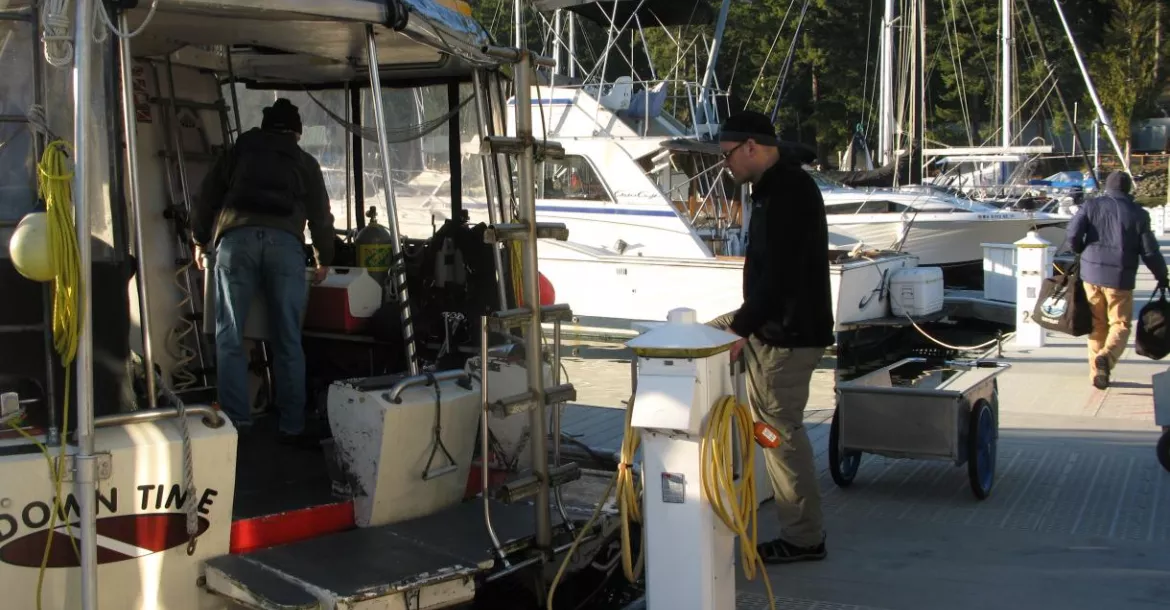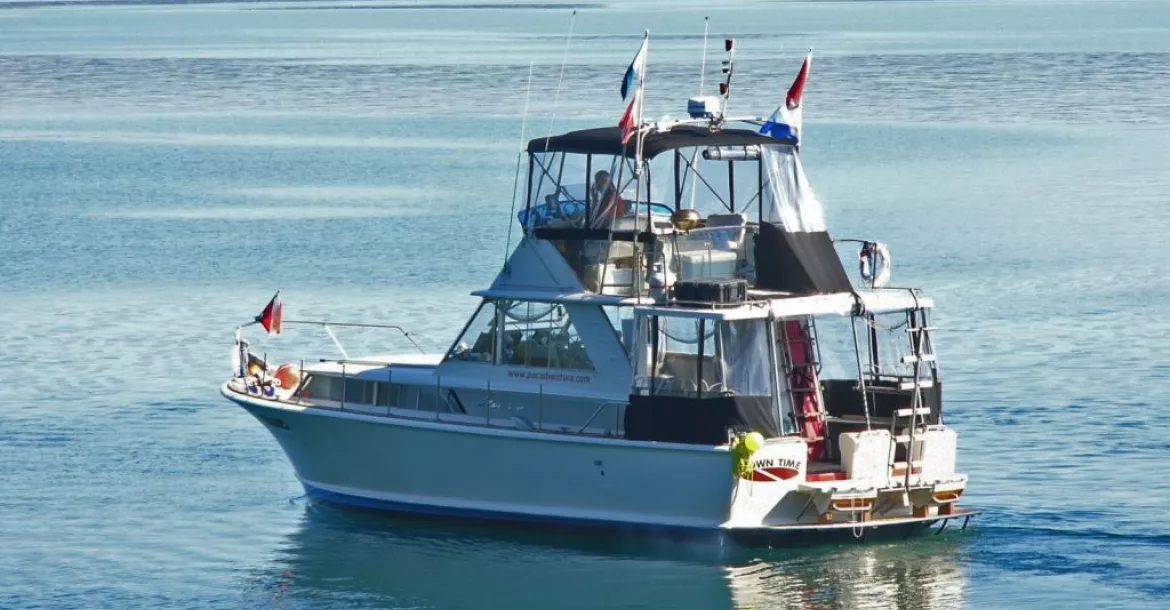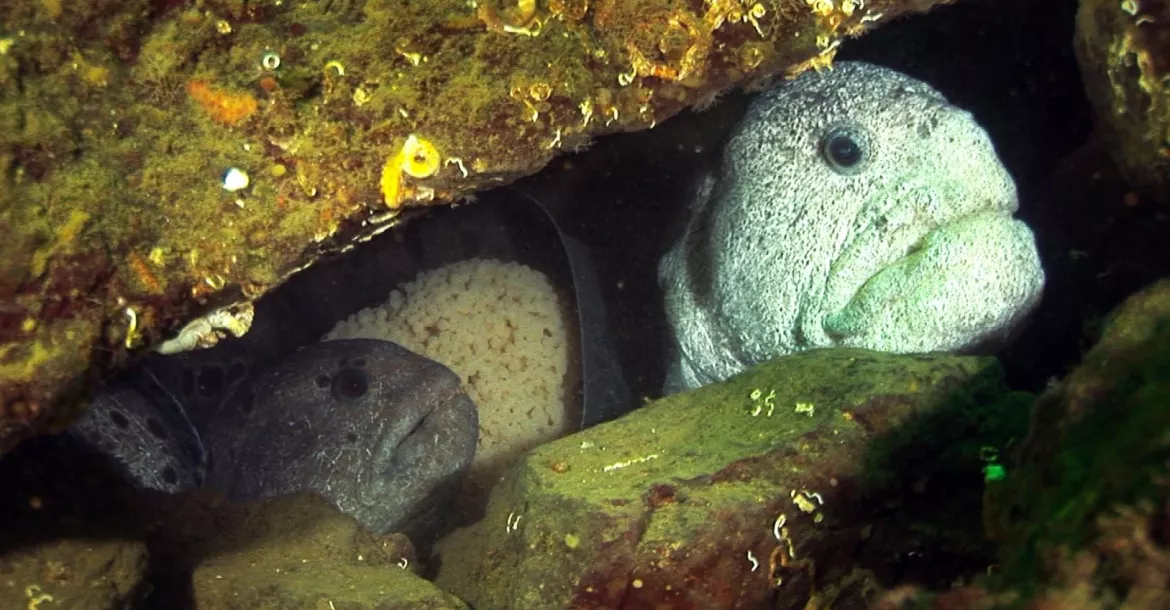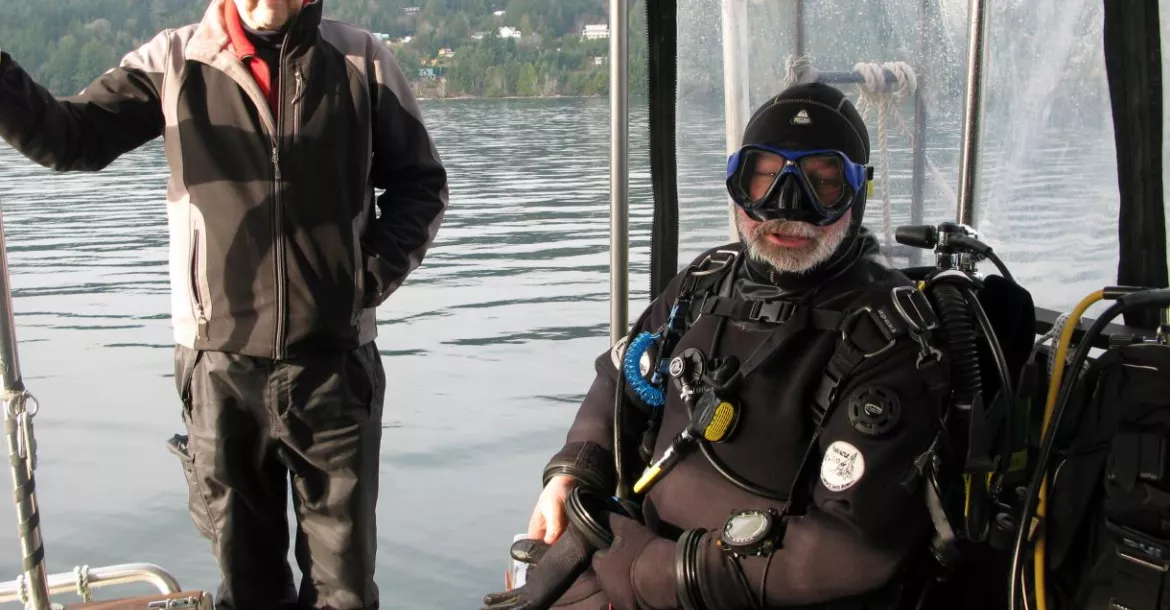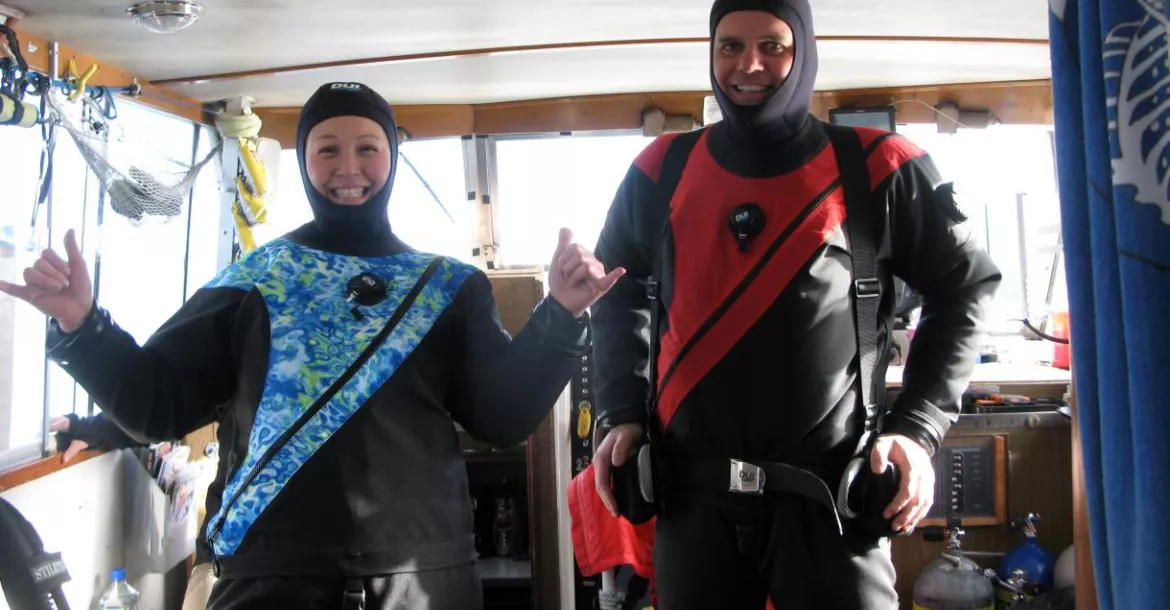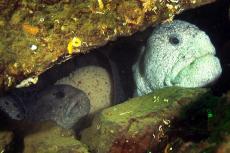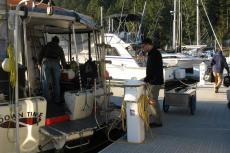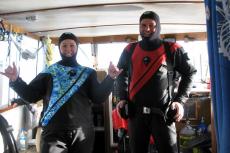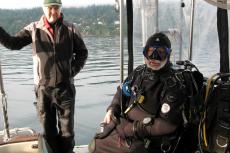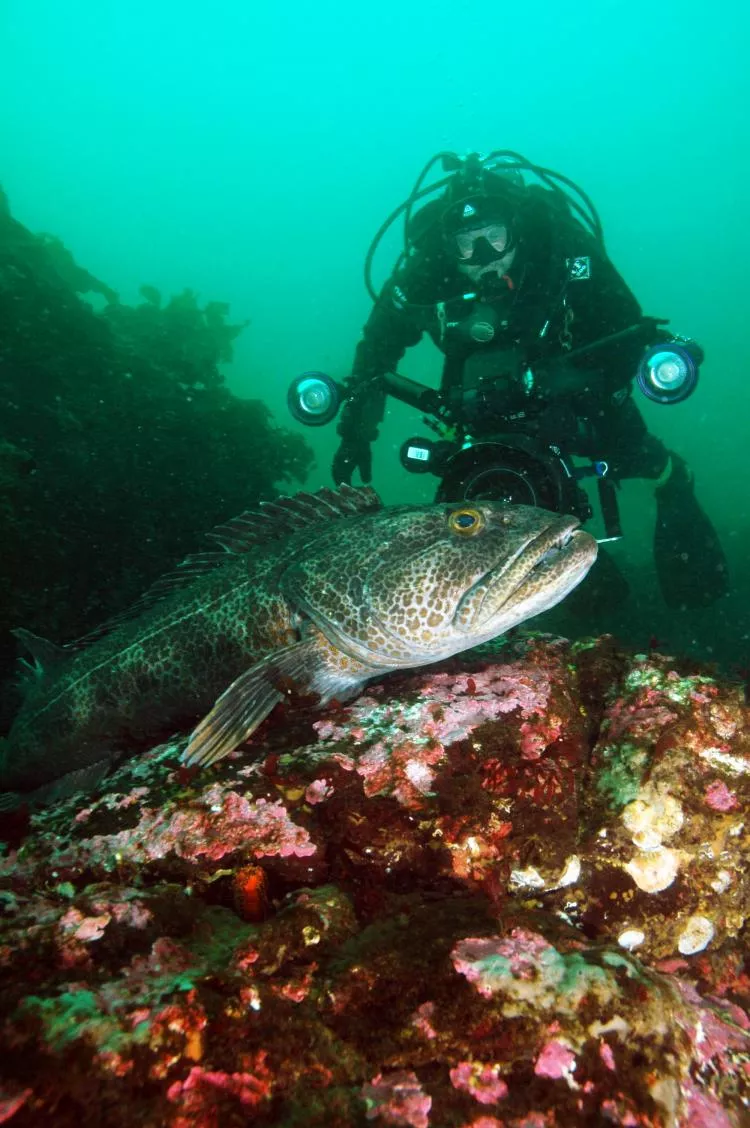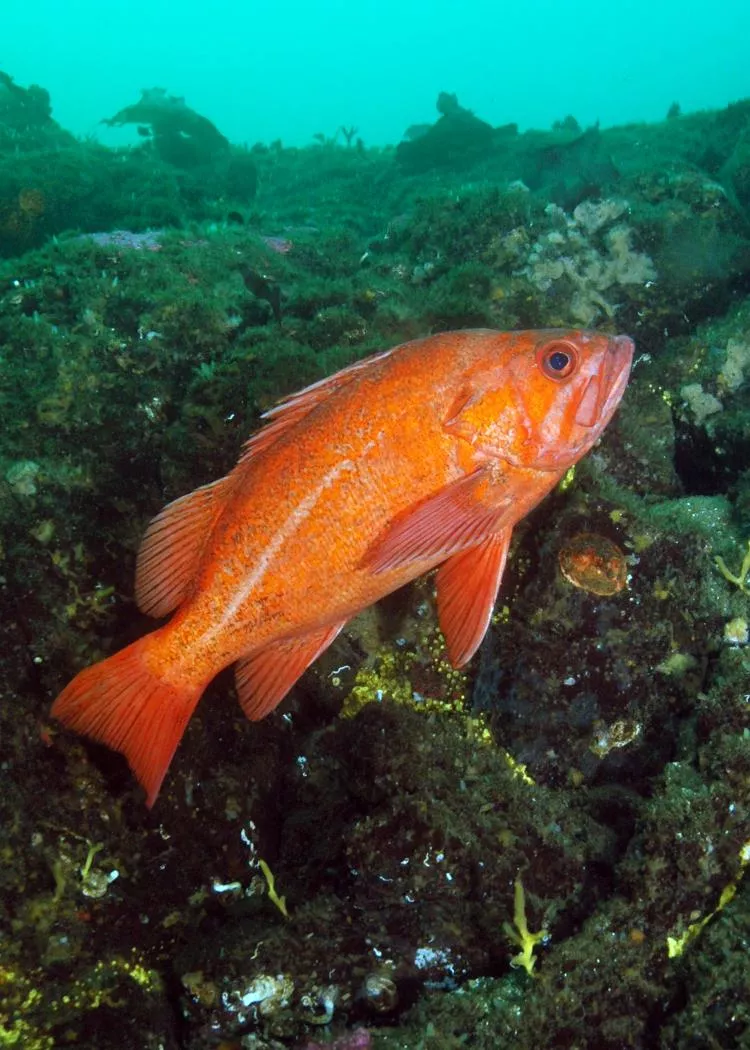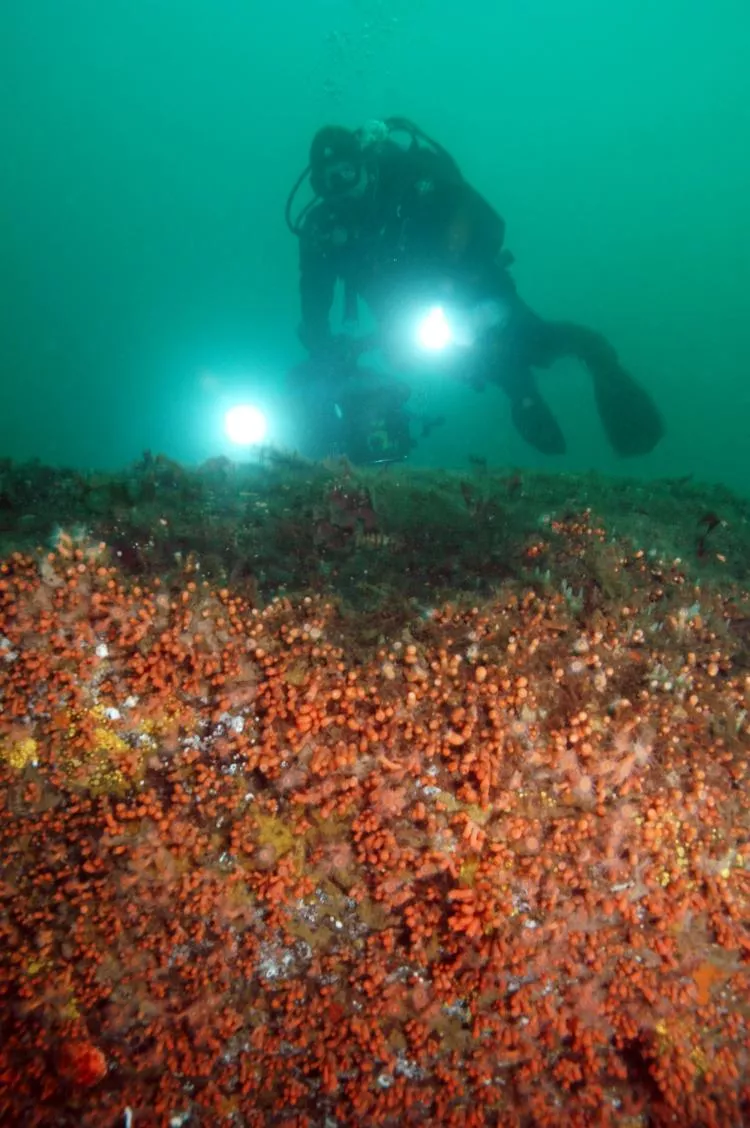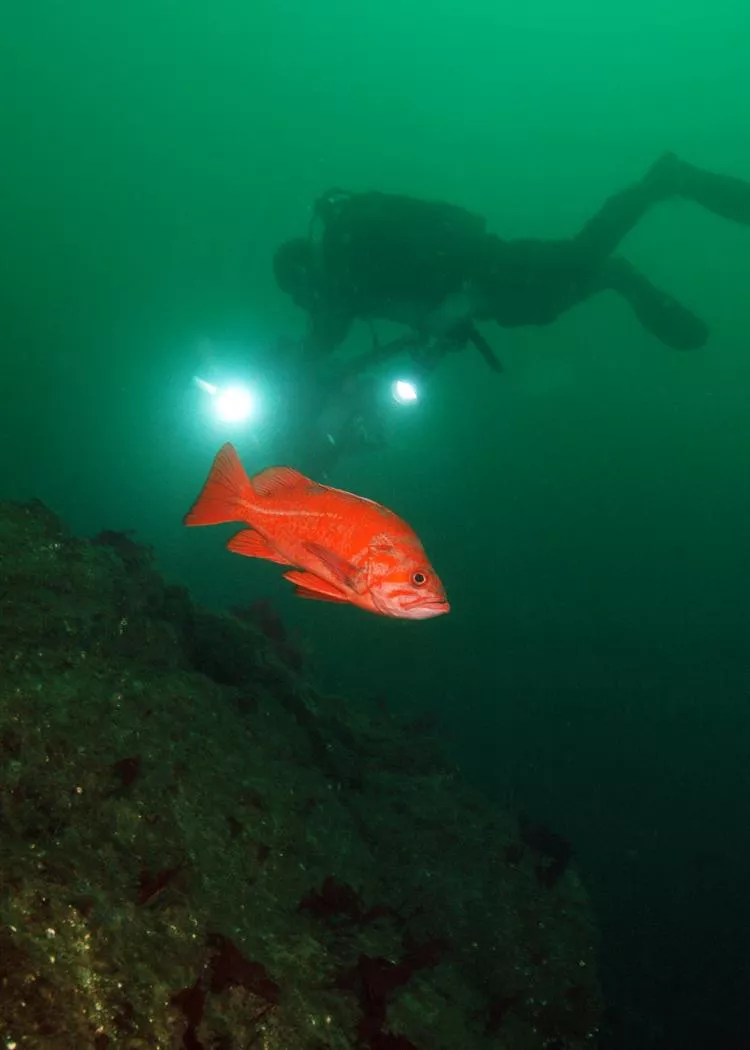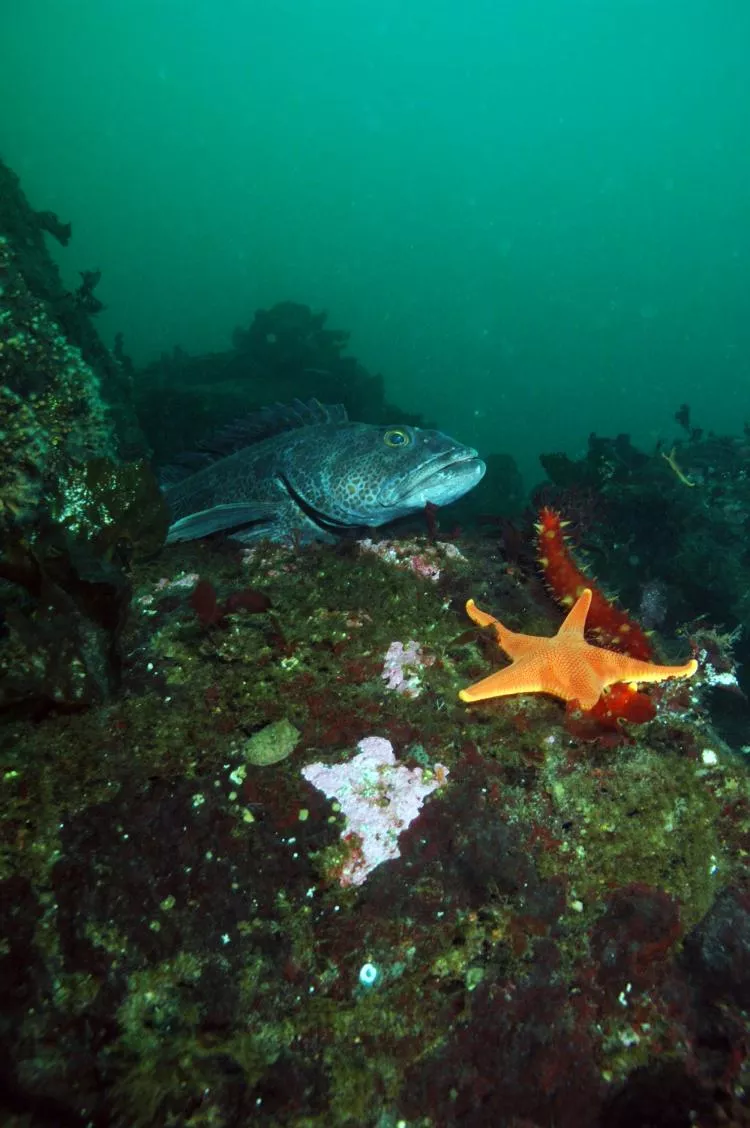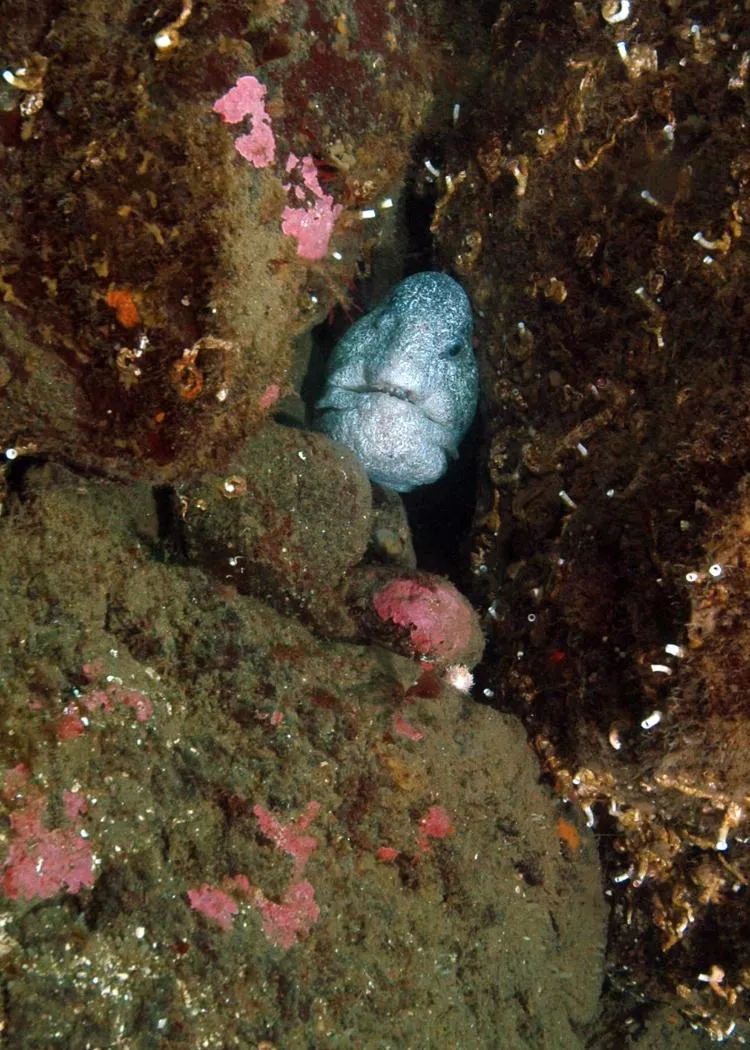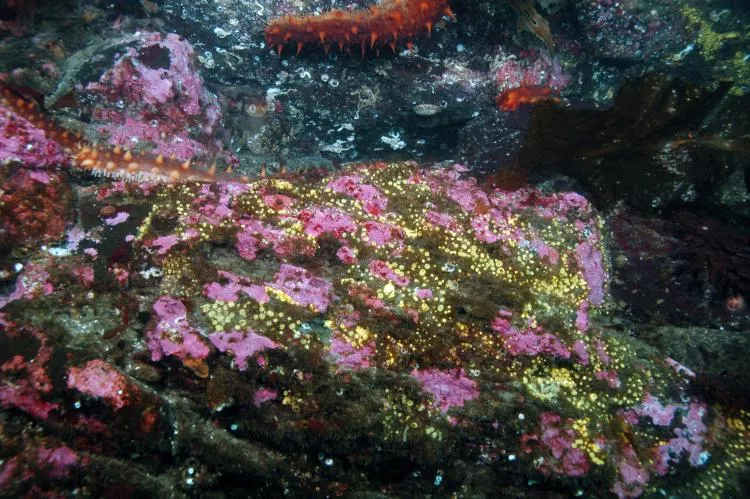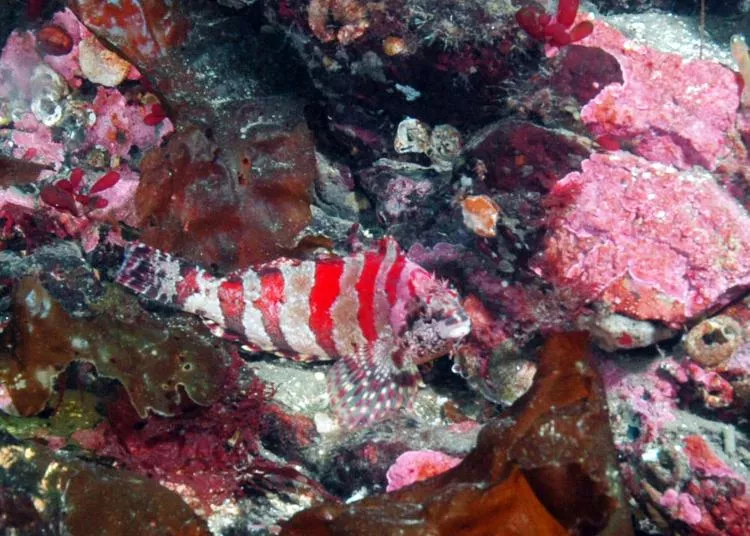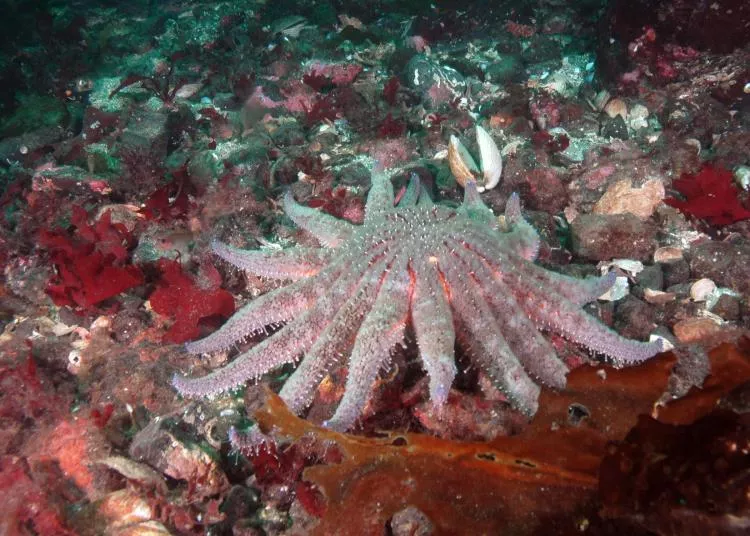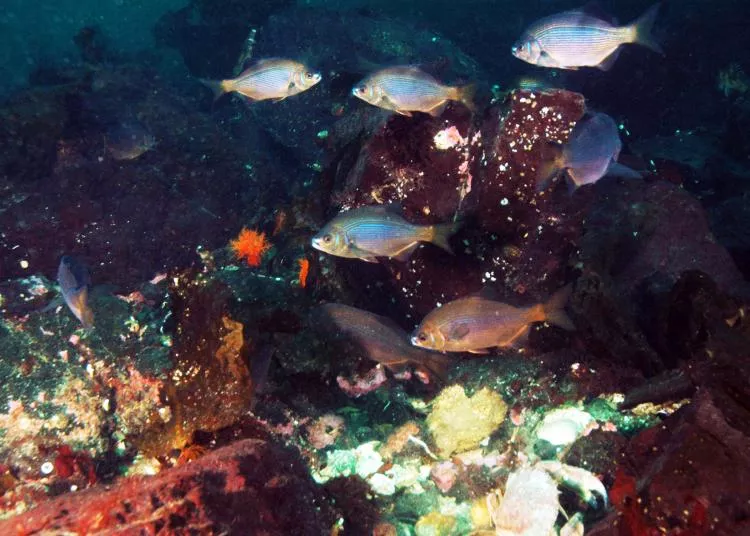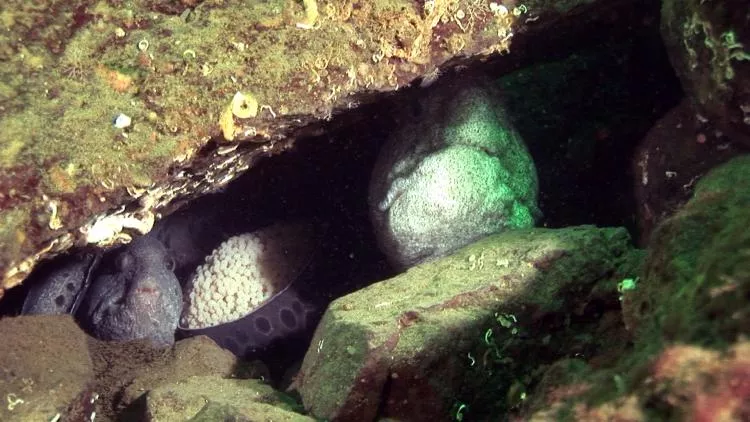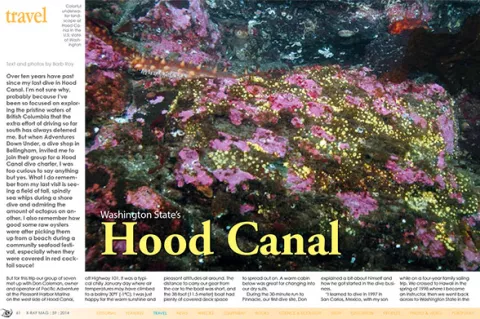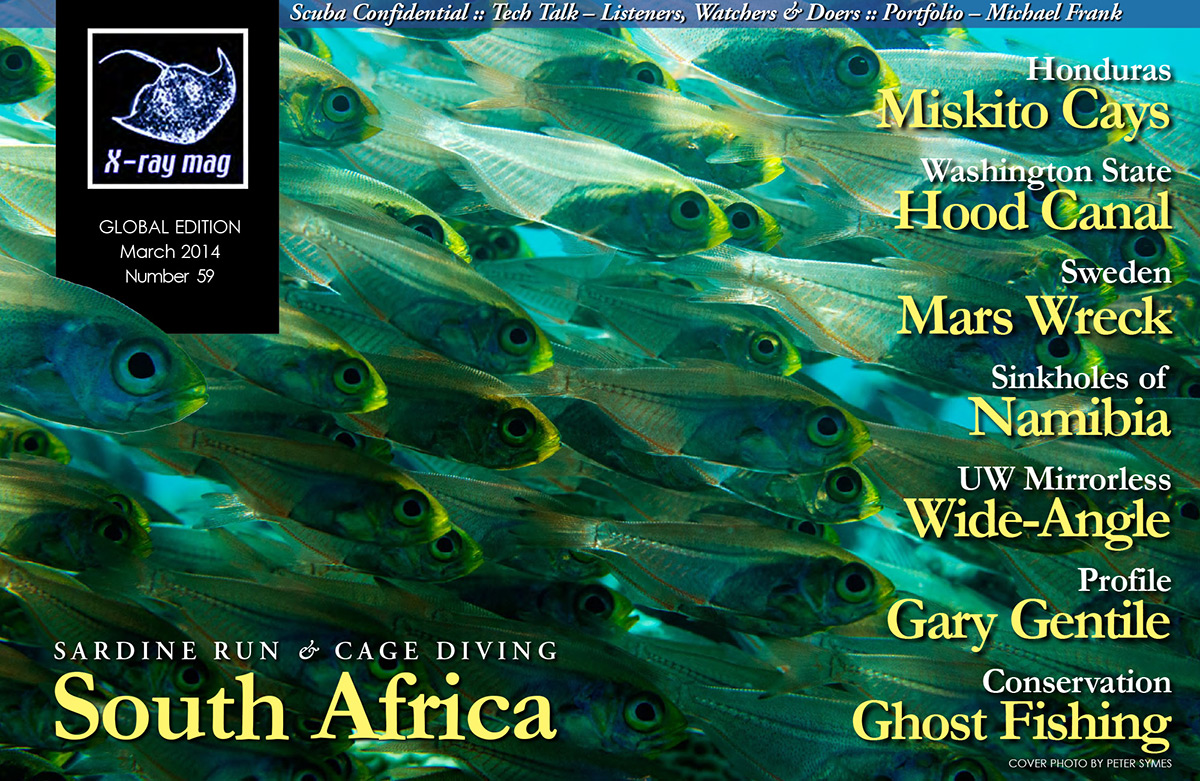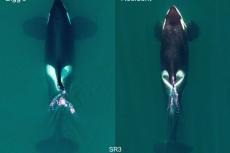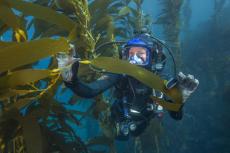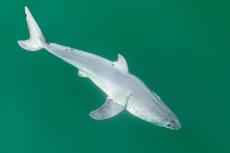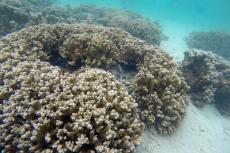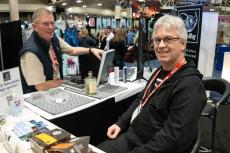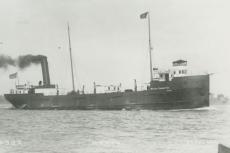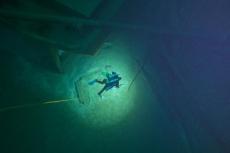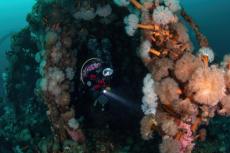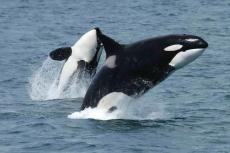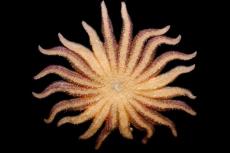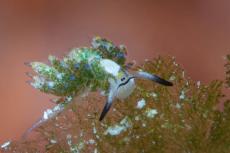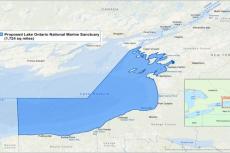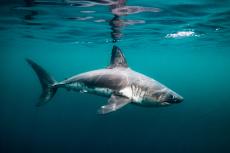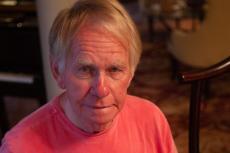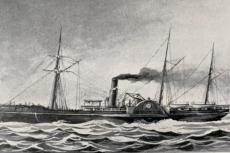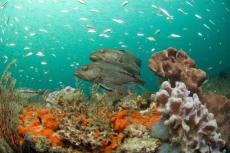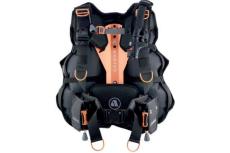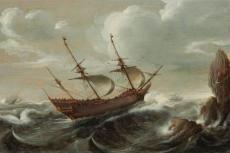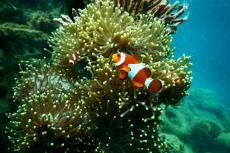Over ten years have past since my last dive in Hood Canal. I’m not sure why, probably because I’ve been so focused on exploring the pristine waters of British Columbia that the extra effort of driving so far south has always deterred me. But when Adventures Down Under, a dive shop in Bellingham, invited me to join their group for a Hood Canal dive charter, I was too curious to say anything but yes.
Contributed by
But for this trip our group of seven met up with Don Coleman, owner and operator of Pacific Adventure at the Pleasant Harbor Marina on the west side of Hood Canal, off Highway 101. It was a typical chilly January day where air temperatures may have climbed to a balmy 30°F (-1°C). I was just happy for the warm sunshine and pleasant attitudes all around. The distance to carry our gear from the car to the boat was short, and the 38-foot (11.5-meter) boat had plenty of covered deck space to spread out on. A warm cabin below was great for changing into our dry suits.
During the 30-minute run to Pinnacle, our first dive site, Don explained a bit about himself and how he got started in the dive business.
“I learned to dive in 1997 in San Carlos, Mexico, with my son while on a four-year family sailing trip. We crossed to Hawaii in the spring of 1998 where I became an instructor, then we went back across to Washington State in the spring of 1999 where I learned to dive in cold water. In the spring of 2002, I started my dive charter business and have had a blast exploring and sharing Hood Canal since then,” he said.
When asked how many boat diving sites he frequents in Hood Canal, he replied, “We have six dive sites that are favorites—Pulali East, South and West Walls, Pinnacle, Broken Leg and Black Point. Another four we do on request as weather and current allow—Rosie’s Ravine, Arrowhead, Flagpole and Elephant Wall. Most sites are not current sensitive except Rosie’s and Flagpole. For us, wind is the major factor when choosing a site. Our popular shore dives include Sund Rock, Octopus Hole, Jorstead Creek, and Point Whitney.”
Pinnacle
Fortunately the Pinnacle site yielded calm water, fairly clear visibility and the sun was still smiling! The boat utilized one of the mooring buoys placed by Washington Scuba Alliance (WSA) and tied up to it. The mooring buoy would also be used as a descent line to directly drop onto the pinnacle below.
“Currently we have four WSA buoys in Hood Canal—Pulali West Wall, Pinnacle, Broken Leg and Flagpole,” added Don, just before his briefing.
“Pinnacle is my favorite site for the variety of structures at the location and the abundance of critters. The site is large enough that I don’t have to see the same parts each dive. For me it takes at least three 50-minute dives to completely explore the entire site, I move pretty slow.”
He continued to tell us more about the site, directions to find critters and depths. As soon as Don mentioned a pair of wolf-eels with eggs, everyone instantly became enthusiastic about jumping in as soon as possible. Only during a behind-the-scenes tour at the Vancouver Aquarium had I ever seen a ball of wolf-eel eggs before.
To increase my chances of actually finding the wolf-eels, I joined up with Ron Akeson, the group organizer and a marine biologist, figuring if anyone can find them he could. Although my Nikon camera is housed in a fair-sized Aquatica housing with duel strobes, it seemed small in comparison to his massive video housing with duel lights as they sat next to one another on the deck (...)
Published in
- Log in to post comments

